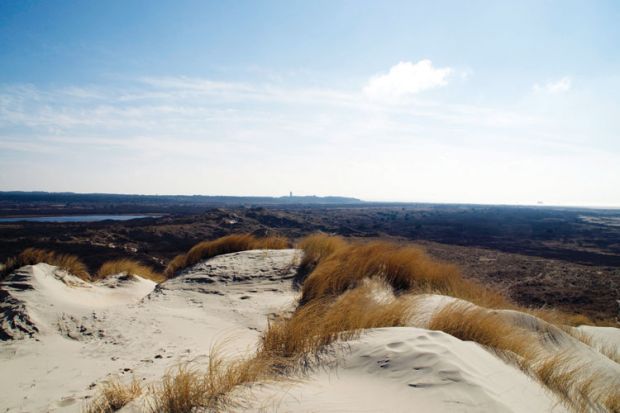What is landscape? It is not wilderness, as John Stilgoe points out. The word comes from the old Frisian of the Netherlands and the North Sea coast of Germany, and means “shovelled land”; or more specifically, “land thrown up against the sea”. As such, “landscape” connotes nature conquered by man – an aestheticised emblem of our dominion over the earth.
Stilgoe, who is Orchard professor in the history of landscape at Harvard University, explores the etymology of the land and the way it appears in our language. His quest ranges from American homesteads to ancient British lanes; it wanders up dead ends and under bridges and along tracks that evolved organically to the width of a herd of driven cattle, to be replaced millennia later by motor cars, as if physically filling the same space. Stilgoe’s prose reflects this eclectic taxonomy: terse, telegraphic, often highly visual, it swerves off in one direction, but always returns to the point.
He is particularly good on what might be seen as the opposite to landscape, seascape. Yet it is the sea that defines the land. Hence the resonance in mariners’ terminology: “making land” for a sailor, for instance, means “the conjuring of land from the sea”; while the sea becomes a lawless state, precisely because it seems to lack the confining features of land. And what is land, anyway, says Stilgoe, but “55,000,000 square miles of earth surface not water…”?
A sense of detachment lies at the heart of our modern dysfunctional relationship to the land. As we lose the arcane names for its elements, their physical counterparts disappear, too (a point made by Robert Macfarlane’s recent Landmarks). We do not observe what Henry David Thoreau saw, “the act of recording a life, in healthy solitude and active connection to loved terrain”. “Instead”, says Stilgoe, “most people stare at screens…they do not explore, do not see, do not recall, do not get out of cars and walk and see and realise.” Landscape has been “tuned out” of our lives.
To evoke these changes, the book produces startling images. Stilgoe cites the apocalyptic devastation of the Middle Ages, when plague and famine removed up to two-thirds of the human biomass from Europe. Swathes of cultivated land were swallowed up by forest, some of it infested with brigands and murderers. Hence, notes Stilgoe, the emergence of the haunted woods still detected in the tales of the Brothers Grimm in the 19th century.
And in another lovely segue, the author takes us from the Old English word for spider, “attercop”, the root of the modern “cop”, to the police officer who may be the most perceptive recorder of the contemporary landscape, remembering “everything from the green, rusty van parked in a driveway to an unmown lawn to a coddled lap dog running free, covered in mud”. Like Bruegel’s figure-filled canvases, their trained eyes animate the landscape. Stilgoe quotes Thoreau again: “farmers might own the land, but the observant walker in time owns the landscape”. In naming, we appropriate. Sometimes we destroy, too. But Stilgoe looks again at meaning, and gives us another, more positive kind of control.
Philip Hoare is professor of creative writing, University of Southampton, and author, most recently, of The Sea Inside (2013).
What Is Landscape?
By John R. Stilgoe
MIT Press, 280pp, £13.95
ISBN 9780262029896 and 2330763 (e-book)
Published 4 December 2015
POSTSCRIPT:
Print headline: All screened off, not lost in space
Register to continue
Why register?
- Registration is free and only takes a moment
- Once registered, you can read 3 articles a month
- Sign up for our newsletter
Subscribe
Or subscribe for unlimited access to:
- Unlimited access to news, views, insights & reviews
- Digital editions
- Digital access to THE’s university and college rankings analysis
Already registered or a current subscriber? Login




